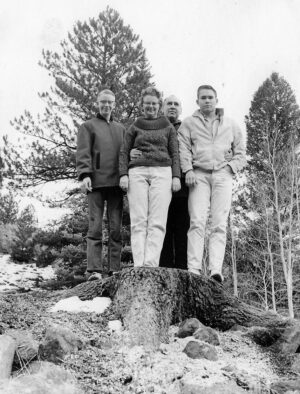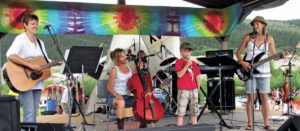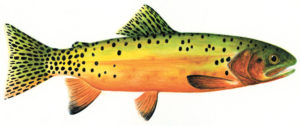by Walter Perch
In a little gully at the base of the red rocks, a grove of spruce, fir and pine trees grow. A secret creek runs down from above – flash fed from storms and nurtured with multi-day drizzle.
Hundreds, if not thousands of years old, the grove has seen a variety of animal traffic and humans. With cougars, deer, avian species and insects, this grove is a bio-region of life. Birds dart through the summer sun from branch to branch. Still they sit, making their calls. In shallow pools water bugs gather near grass shoots, darting around on their tiny legs.
The trees are spread out by perhaps a mile and a half of the creek which is surrounded by San Isabel granite, Folsom uplifts and conglomerates. In a wet spring, the forest is filled with a clicking noise – the sound of pine needles expanding and growing.
At an elevation of 7,500 feet this mixed Rocky Mountain setting is dry. Only a few hundred feet of change and a few degrees of aspect alter growth seasons and species of trees.
Approaching southeast, ponderosa pines grow with gamble oak, summer flowers, grass and cactus too. Jagged red rocks make perfect hiding homes for lizards, which shoot in and out of shadows. Juniper trees and their berry help scent the air. After a thick snow, squirrel, bird and fox tracks leave a curious trail.
Decaying stumps are evidence of human cutting, along with animal paths which lead to the grove. These paths take the Christmas tree harvester to the grove, through transition zones of life. Sometimes the harvester walks the path in sandals. Sometimes he is alone, other times with a dog and friends or with family. This year, sturdy boots help provide traction on icy slopes of the path.
This harvester cutting trees is on private land with a classic Colorado tale, nestled where the thunderstorms rumble and the snow piles three feet deep in March. A family property, the harvester and cousins in their younger days had helped blaze the path and discover the grove for adults. Now he is an adult and taking children to the grove to cut Christmas greens.
Past the eroding rock, through the scratchy branches of scrub oak, the path descends to an overlook. Trees 60 feet high tower above nice ten-footers – ones that look great covered in little white twinkly lights, with red and green stands. A survey of the grove reveals previous years which were fruitful.
The act of cutting trees in this grove dates to the 1870s when those old growth logs were used to build pioneering towns on the plains. Now their stumps hold thick pockets of moss and the harvester is continuing the deed – this time for Christmas green.
His and those who join are on a quest for firs and spruces, long needle pines with cones and holiday Yule. It’s not a commercial operation, which it very well could be, since fresh Christmas wreaths and trees fetch high dollar at Front Range stores.
To find the best greens, the path leads the way. Past trees too big, too small. Not fully round. Trees with a crooked top. Not enough lower branches, or one too big that if removed would make the tree unbalanced. Funny color green. Too close, too far and heavy. The path continues, passing trees in favor of the perfect one.
Deeper they go into the grove. Passing through spider webs, the path becomes soft with decades of duff and rotting needles. Fifteen, 20 minutes from the cabin now, cooler air here keeps deep snow blocking the path in some years. Other years the path is blocked at the overlook and the harvester must ponder his move.
Coming properly equipped, hand saw and clippers do the work. If the harvester is joined, the job is quick. Alone, it can be done. To fill the space just right, it’s best not, though.
His saw is passed down from his father, a relic of the 70s and made in America. Blaze orange with two rubber grips, the saw makes easy work of the soft, green wood. Depending on the year, weather, and which car is taking Christmas greens back home, another two or three trees are used. Long needle pines are snipped and gathered for window decorations and cheer.
Tugging and pulling the trees back up the path, the harvester is careful not to knock the cones from the branches. Lashed and tethered to car roofs and trunks, the sappy smell lingers for days. Back at home, with red ribbon, white lights and ornaments, the harvester reflects on the tradition, wondering how many others make the trip into the woods to find their grove.
Walter Perch likes to visit the grove with a cold beer, friends and watch sunsets above the tree tops.


